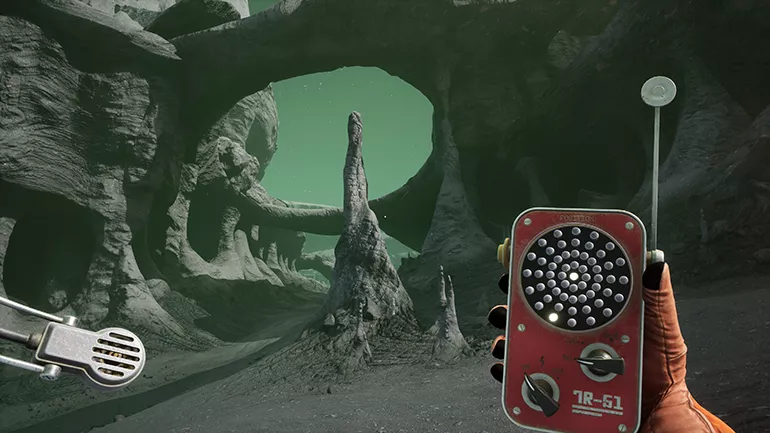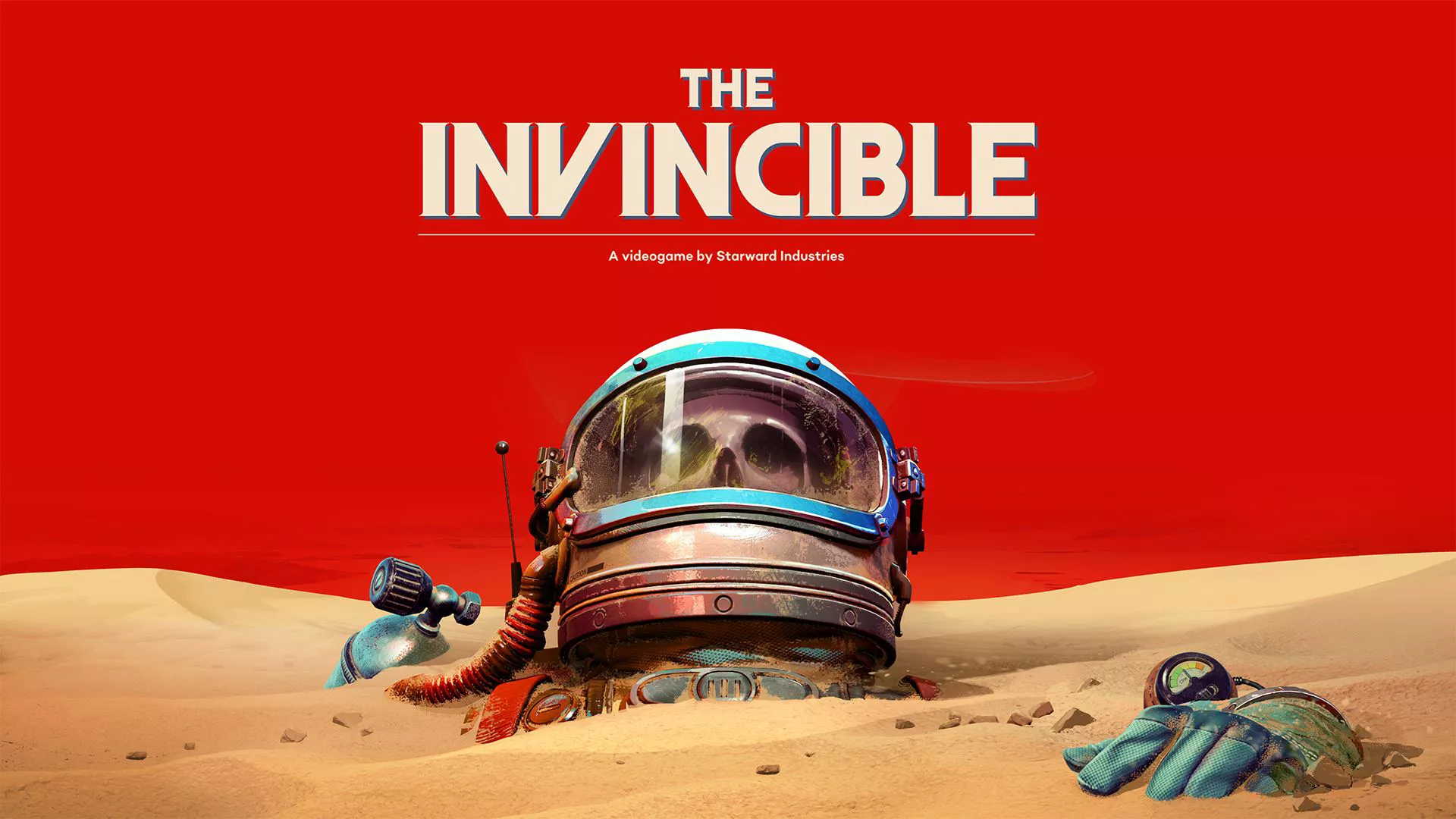The Invincible is a captivating game that takes inspiration from the 1976 hard sci-fi novel by Stanislaw Lem. Set on an alien planet, this narrative-driven mystery immerses players in a world emphasizing storytelling. Falling into the ‘walking-sim' category, the game invites players to explore the environment at a leisurely pace, taking in the breathtaking sights and engaging in occasional tasks like flipping switches or making crucial decisions that impact the story.
While The Invincible offers a compelling narrative, it is worth noting that it may not be suitable for those seeking fast-paced gameplay. Patience is key as players slowly unravel the mysteries of this intriguing world.
While I may lack knowledge of the original novel, I admit my ignorance upfront. It is important to note that I have not read it, nor have I extensively compared the game to its source material. My research has provided me with some understanding of the novel's themes and its impact on the science fiction genre, but I will refrain from making direct comparisons. Instead, let us acknowledge and appreciate the rarity of books being adapted into videogames, which makes The Invincible a somewhat special and unique experience. Whether this game stays true to Lem's work or diverges greatly, it is still a noteworthy endeavor in bridging the worlds of literature and gaming.
The Invincible is a captivating novel that centers around the Dragonfly, a research vessel, and its unexpected journey to Regis III, a desolate planet. What makes Regis III notable is the impending arrival of the Alliance's most formidable ship, the Invincible. Drawing inspiration from its source material, the novel delves into thought-provoking themes of alternative evolution and mankind's significance in the vastness of space. It raises the question of whether humans truly have a place in the vastness of the universe. The Invincible challenges our assumptions, reminding us that not everything is meant for us and forcing us to confront the limits of our existence.
Yasna's Journey and Unique Perspective
Yasna, the protagonist in The Invincible, is not your typical action hero. As an astrobiologist, she brings a unique perspective to the story. Unlike soldiers or adventurers, Yasna is a scientist at heart, and this choice by the writers allows for a deeper exploration of the novel's themes. Through her eyes, we gain a better understanding of the intricate world of astrobiology and the challenges faced by those who study it. This perspective adds depth to the storytelling, offering a fresh take on the science fiction genre. By choosing Yasna as the main character, The Invincible offers a refreshing and thought-provoking narrative.
Yasna emerges as a plucky and likeable lead character who finds herself thrust into a nightmarish scenario on the surface of Regis III. With little recollection of how she ended up there, she is left to grapple with the overwhelming sense of isolation. However, her solitude is short-lived as she stumbles upon a radio and manages to establish contact with Novik, the ship's Astrogator.

Novik's composed and collected demeanor serves as a lifeline for Yasna, helping her stay grounded amidst the chaos. More than just a voice on the other end of the line, Novik becomes a sounding board for Yasna's philosophical and biological ponderings, offering her a sense of companionship in the midst of her harrowing journey.
As Yasna embarks on her expedition to uncover the whereabouts of her lost companions, she finds herself unraveling the enigmatic secrets of Regis III. The planet's seemingly tranquil dunes and majestic mountains conceal a web of metallic piping that weaves its way through the very core of its existence.
Moreover, Yasna's fellow crew members exhibit signs of a disturbing mental affliction, their once vibrant personalities now shrouded in a cloud of confusion and despair. Adding to the intrigue is Yasna's own memory loss, a captivating narrative device that seamlessly intertwines with the unfolding story, leaving readers eager to discover the truth behind this captivating enigma.
Pacing and Gameplay
The pacing of The Invincible can be best described as a slow-burn, but it often feels more like a glacial trudge. It takes a significant amount of time, about an hour or two, for the game to truly pick up and present its most intriguing narrative hooks. Unfortunately, during this initial period, players are left with an abundance of monotonous brown dust to observe and a tedious plodding about.
As the entire story spans only around 7 or 8 hours, this prolonged and uneventful beginning becomes a significant portion of the overall experience, hampering the game's ability to establish a captivating mystery. While the arid landscape peppered with metallic structures and peculiar objects is visually appealing, it fails to offer anything particularly new or innovative in the realm of science fiction.
Yasna, the protagonist of the game, may not be the most exciting character to play as, but her slow and plodding nature serves a purpose. The developers aimed to fully immerse players into Yasna's world by incorporating first-person perspective and detailed interactions, similar to the approach taken in Red Dead Redemption 2.
With every step she takes, players can feel the heavy weight of her spacesuit pulling her down, and the exhaustion she experiences as she struggles to climb ledges. As the story progresses, Yasna endures countless hardships, gradually wearing her down both physically and emotionally. Initially, this deliberate movement style successfully fosters a sense of relatability and keeps players fully engaged in the immersive world of the game.
In the game, Yasna's sluggish walking speed, limited sprint distance, and arduous climbing quickly become tiresome. This is especially evident in the opening moments when Yasna rummages through her satchel, forcing players to repeatedly tap the same button while she sluggishly completes the task. As I progressed further into the game, my frustration with Yasna's lethargy grew exponentially. I couldn't help but wish for a more gamified experience, even if it meant sacrificing some immersion.
The Invincible falls short in terms of gameplay as well. While the walking sim genre is known for its minimal gameplay, I had hoped that this game would at least bring something new to the table. Unfortunately, there are no puzzles to solve or complex scenarios to navigate through. Instead, you simply wander around, occasionally interacting with objects, and become frustrated when you realize that you can't interact with everything else in the environment.
Moreover, the game restricts your ability to climb, only allowing certain spots to be accessed, and ankle-height rocks block Yasna's progress completely. These moments feel out of place and disrupt the immersion that the game tries so hard to create.
Narrative Immersion and Design Choices
The game manages to replicate the immersive experience of the book it is based on by limiting the player's control in certain lengthy sequences. Instead of actively participating in the unfolding events, players are reduced to mere spectators. This deliberate design choice mirrors the narrative structure of the book, where the reader assumes the role of a passive observer rather than an active protagonist. By relinquishing control and forcing players to watch events unfold, The Invincible successfully captures the essence of the book and offers a unique and engaging gaming experience.

The writing in this game is undeniably sharp, capturing my attention from the very beginning. Despite being a sci-fi nerd and having encountered numerous storylines in the genre, I found myself intrigued by the mystery presented in this book. It is true that much of the content did not surprise me, given the age of the book, but the execution was so skillful that it hardly mattered. The author managed to breathe new life into familiar concepts, keeping me engaged and eager to continue reading.
The ending left me feeling disappointed and unsatisfied. Despite the various choices available, none of the endings provided the resolution I had hoped for. It seemed as though the game was trying to leave room for a potential sequel, but that doesn't excuse the lack of a strong conclusion to the story. As the credits rolled, I couldn't help but feel a sense of emptiness, with countless questions and unresolved plot threads swirling around in my mind.
The Invincible's retrofuturistic visuals are a stunning depiction of the optimistic ideals of the 50s and 60s, where people envisioned a future filled with streamlined flying cars and gleaming robots. Starward, the creators of this visual masterpiece, have ingeniously blended advanced technology with a nostalgic touch. The use of big levers and chunky knobs to control their futuristic gadgets, and the flying probes that spit out photographs to be examined, create a sense of wonder and excitement. Of course, some suspension of disbelief is required, as the Invincible's humanity possesses the ability to create force fields and traverse galaxies, but still relies on hand-drawn maps. However, once one embraces this fantastical world, the visuals become even more enchanting and captivating.
Verdict
The Invincible can be best compared to Firewatch in Space, as it presents players with a captivating mystery while lacking in compelling gameplay. The narrative of the game takes some time to build up, and the ending may leave players wanting more. However, the heart of the experience lies in the thoughtful and traditional sci-fi story it tells. It explores themes of human evolution and the enigmatic wonders that may await us in the vast expanse of the universe. The Invincible is a game that I would recommend only to devoted fans of walking simulators and sci-fi enthusiasts, as it requires the patience necessary to fully appreciate its narrative.





